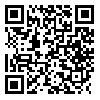Mon, Dec 22, 2025
[Archive]
Volume 10, Issue 3 (Aug 2025)
JNFS 2025, 10(3): 413-422 |
Back to browse issues page
Download citation:
BibTeX | RIS | EndNote | Medlars | ProCite | Reference Manager | RefWorks
Send citation to:



BibTeX | RIS | EndNote | Medlars | ProCite | Reference Manager | RefWorks
Send citation to:
Moslemi M, Mahdavi-Roshan M, Joukar F, Mansour-Gahnaei F. Nutritional Assessment and Estimation of the Attributable Risk of Diabetes Mellitus to Simple Sugar Intake in Northern Iran: The PERSIAN Guilan Cohort Study. JNFS 2025; 10 (3) :413-422
URL: http://jnfs.ssu.ac.ir/article-1-1151-en.html
URL: http://jnfs.ssu.ac.ir/article-1-1151-en.html
Gastrointestinal and Liver Diseases Research Center, Guilan University of Medical Sciences, Rasht, Iran.
Abstract: (1070 Views)
Background: Diabetes Mellitus (DM) is a non-communicable disease with an increasing rate across all age groups worldwide. It makes the body vulnerable to other chronic diseases. Besides medication therapy, DM can be controlled by following a healthy lifestyle. In this study, the dietary patterns of diabetic individuals assessed in the Prospective Epidemiological Research Studies of the Iranian Adults (PERSIAN) Guilan Cohort Study (PGCS) population. Methods: A comprehensive survey was conducted over three years among 10,276 individuals aged 35 to 70 in the PGCS population. Socio-demographic and food intake information of 2,531 diabetic patients was collected using a food frequency questionnaire (FFQ). Data analysis was conducted with SPSS software. The estimation of the attributable risk of DM related to the intake of simple sugars was performed using the population attributable risk (PAR) equation. Results: The intake of dietary fibers was lower than the recommended 25-38 g/day in these patients, while they consumed high carbohydrates (more than 65% of total calories/day) and simple sugars (more than 10% of total calories/day). More than 15% of total energy was provided by simple sugars in these patients. The average population attributable risk of DM (PARDM) in the total population was 17.84% based on the intake of fructose and glucose, which was close to the proportion of diabetic patients in this survey by considering the proportion of pre-diabetic patients. Conclusions: Regarding the significant effect of dietary patterns on the development of DM, the authors suggest developing educational programs to help individuals maintain a balanced diet to decrease the rate of DM in the coming years.
Keywords: Demography, Dietary pattern, Diabetes mellitus, Non-communicable diseases, Nutritional assessment.
Type of article: orginal article |
Subject:
public specific
Received: 2024/10/8 | Published: 2025/07/6 | ePublished: 2025/07/6
Received: 2024/10/8 | Published: 2025/07/6 | ePublished: 2025/07/6
Send email to the article author
| Rights and permissions | |
 |
This work is licensed under a Creative Commons Attribution-NonCommercial 4.0 International License. |






